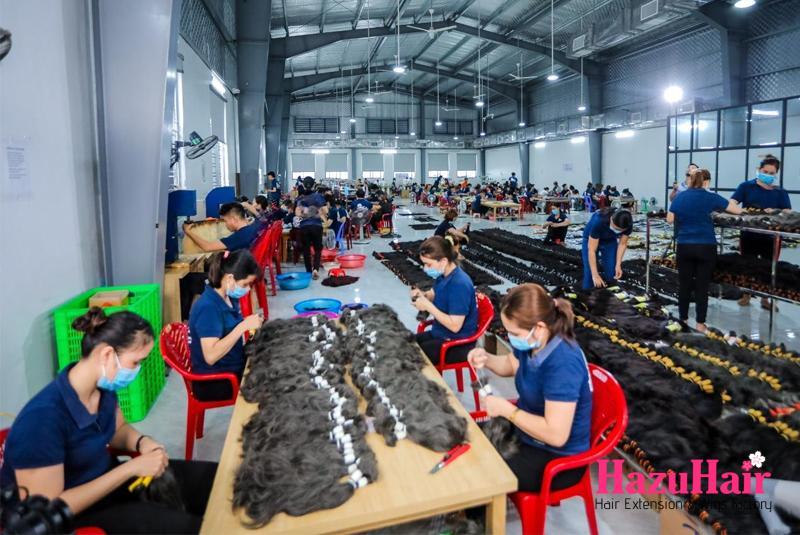Hair knowledge
Types of Wig Caps – Everything You Need to Know
If you’re new to wigs and finding it difficult to understand wig caps, you’re not alone. There are two types of wig caps:
- The cap construction: This forms the base of a wig, and understanding its structure can help you choose the right wig for your needs.
- A stretchy cap: This is worn underneath the wig to keep your natural hair flat and secure.
Though both are called wig caps, they serve completely different purposes. In this article, we’ll focus on the first type – Wig Cap Constructions.
With so many wig cap constructions available, it can get confusing. However, understanding their features and functions will make it easier to select the perfect cap for you. This guide will walk you through the different types of wig caps, including popular choices like lace front wigs, full lace wigs, closure wigs, and more.
1. Lace Front Wigs
Lace front wigs feature a lace panel across the front of the wig, which allows for a natural look and is a popular choice among wig wearers. The most common size for a lace front wig is 13×4 inches, but other sizes are available as well.

Lace Front Wig Cap Types: 13×4 lace front wigs, 13×5 lace front wigs, and 13×6 lace front wigs. There are also smaller and larger lace cap options to suit different preferences.
Pros:
- They provide a more natural appearance compared to non-lace wigs.
- Installing a lace front wig is quicker than other hair extension methods, like sew-ins, which can take several hours.
- Lace front wigs are versatile—you can part them in the middle, on the side, or style them in half-up, half-down looks.
- You can easily prep, style, and maintain a lace front wig at home, without the need for professional help (though that’s an option if desired).
- The cap construction allows your scalp to breathe, an essential feature for those who wear their wigs for extended periods.
Cons:
- Applying adhesives like got2b glue to secure the wig can cause damage to your hairline over time.
- Lower-quality lace front wigs may be difficult to make look natural. However, this issue can be avoided by opting for wigs with Clear Lace and Clean Hairline technology, which eliminates the need for plucking or bleaching the wig’s knots.
2. Lace Closure Wigs
Closure wigs are similar to lace front wigs, but there is a key distinction. They feature sheer lace in the front, but this lace is significantly smaller, typically measuring about 4 inches across and 4 inches back. Closure wigs are an excellent option for beginners due to their easier maintenance compared to other wig types.

Closure Wig Cap Types: 4×4 lace closure wigs, 5×5 lace closure wigs, and 6×6 lace closure wigs.
Pros:
- Closure wigs are easier to install than lace front wigs and other extensions, requiring less adhesive.
- Removing a closure wig is straightforward—all you need to do is take it off.
- They are generally more affordable than other types of wig caps.
Cons:
- Styling flexibility is limited with closure wigs; you can only part your hair within the lace area, which is typically 4 to 6 inches wide. There is no lace on the sides, so pulling your hair back into a ponytail will expose the wefts.
3. Full Lace Wigs
Full lace wigs are constructed entirely from lace, with human hair knotted throughout. These wigs are also known as 100% hand-tied wigs. Their unique construction allows for a wide range of styling options, making them one of the most versatile and expensive wig types available.

Pros:
- The complete lace cap design makes full lace wigs breathable and comfortable to wear.
- With lace covering the entire cap, you have the freedom to style your hair in various ways. Whether you want to part, braid, or wear your wig in a high ponytail or space buns, the possibilities are endless.
- Full lace wigs are easier to maintain and generally of higher quality than other wig types.
- They provide a natural appearance and lay flatter against the scalp, as there are no bulky wefts.
Cons:
- Full lace wigs tend to be more expensive compared to lace front, 360, and closure wigs, often costing several hundred dollars for high-quality options.
- They may not be ideal for beginners, as they can be delicate and require more skill to install properly. New users risk tearing the lace, which could damage the wig.
4. 360 Lace Wigs
360 lace wigs feature lace around the entire perimeter of the wig, designed to allow wearers to pull their hair into a high ponytail. The lace typically measures about 4.5 inches thick at the front and 2 inches thick at the back.

Pros:
- Styling Versatility: 360 lace wigs offer greater styling options compared to lace front and closure wigs, allowing for low ponytails, high ponytails, and updos without exposing wefts or edges. However, note that you cannot create space buns due to the inability to part the wig straight down the middle.
- Fuller Appearance: These wigs often have more volume at the crown, perfect for achieving luxurious looks.
- Natural Baby Hairs: You can create baby hairs all around the wig, enhancing the natural appearance.
- Breathability: The lace construction allows your scalp to breathe, making these wigs more comfortable to wear than other types.
Cons:
- Higher Cost: With more lace included, 360 lace wigs tend to be more expensive than lace front and closure wigs.
5. Headband Wigs
Headband wigs are wigs that come attached to a headband and do not include any lace. They are available in a wide variety of hair textures, making it easy for everyone to find a style that suits them.

Pros:
- Affordability: Headband wigs are budget-friendly, often available for under $50 for a human hair option.
- Ease of Use: They can be put on and removed in seconds, making them ideal for beginners or for casual outings when you need a quick solution. The convenience factor is a significant advantage.
Cons:
- Limited Styling Options: You cannot part a headband wig; it can only be worn as it is unless you blend it with your natural hair at the back, which allows for a ponytail.
- Comfort Issues: Headband wigs can be uncomfortable, particularly in warmer weather.
6. T Part Wigs
T Part lace wigs feature a T-shaped lace design at the front. Typically, they provide around 4 inches of lace across the front and a 1-inch wide section of lace either in the middle or on the side. T-part wigs are available in various sizes, including options like 13×4, 13×5, and 13×6.

Types: Middle Part, Side Part, 13×4 T Part Wigs, 13×5 T Part Wigs, 13×6 T Part Wigs.
Difference Between T Part Wigs and Lace Front Wigs: Understanding the distinction between T-part wigs and lace front wigs can be tricky. The key difference is that T-part wigs have less lace than lace front wigs. For instance, a 13×6 lace front wig features lace across the full front (13 inches) and extends back (6 inches). In contrast, a 13×6 T-part wig has lace only across the front (13 inches wide) and in the parting area (6 inches long), with minimal lace around the ears due to its T-shape.
Pros:
- Cost-Effective: T-part wigs are generally more affordable than lace front and 360 lace wigs because they contain less lace.
- Natural Appearance: The lace around the front hairline and parting area allows for a more natural look.
Cons:
- Limited Styling Options: You cannot pull your hair into a ponytail or create side braids due to the lace placement.
- Fixed Parting: If you buy a middle part T-part wig, you can only wear it that way; similarly, a side part T-part wig cannot be worn in the middle.
7. U Part Wigs
U-Part wigs feature a U-shaped section for your natural hair to blend in. Some U-part wigs come with lace for a more natural appearance, while others do not. If the wig has lace, you’ll need to trim any excess lace for a proper fit.

Pros:
- Natural Finish: U-part wigs allow your natural hair to show, providing a more realistic look and giving you the freedom to style your baby hairs as desired.
- Less Installation Time: They serve as a convenient alternative to sew-ins, requiring minimal manipulation.
- Undetectable Blend: When blended well with your natural hair, U-part wigs can appear undetectable.
- Affordable: U-part wigs are typically less expensive than many other wig types.
Cons:
- Risk of Damage: While most of your natural hair is protected, the leave-out can be exposed to styling and environmental damage, especially with frequent heat usage.
8. Weft Wigs
Weft wigs are capless and made by sewing together wefts. While the term “capless” might be misleading, these wigs do have a cap that is open. The thickness of the wig depends on how closely the wefts are sewn together, making weft wigs known for their comfort.

Pros:
- Lightweight: Weft wigs are lighter than other wig types because the wefts are not sewn too tightly together.
- Comfortable: The spacing between the wefts allows air circulation, making them a popular choice for wearers.
- Beginner-Friendly: They are easy to use, requiring no lace cutting or blending, making them ideal for those new to wigs.
- Variety of Styles: You can find weft wigs in numerous styles and colors, ensuring a good selection to choose from.
Cons:
- Less Natural Appearance: Weft wigs may not look as natural as other types, and others might be able to tell it’s a wig.
- Limited Styling Flexibility: You cannot change the style of a weft wig; you must wear it as it comes.
- Mass Production: Most weft wigs are machine-made and produced in bulk.
How to Choose the Right Wig Cap Construction
With a plethora of options available, selecting the ideal wig cap construction can be challenging. However, there’s no need to feel overwhelmed. Here are some helpful tips to guide your decision:
1. Cost: If you’re on a budget, consider opting for weft wigs, headband wigs, or T-Part wigs, as these are generally the most affordable options. In contrast, other types of wigs, particularly full lace wigs, can be significantly more expensive.
2. Application Difficulty: The amount of lace on a wig can impact its installation. More lace typically means a more complex application process, and lower-quality wigs can be harder to style. For beginners, weft wigs, closure wigs, lace front wigs, T-Part wigs, or U-Part wigs are recommended. Alternatively, you can choose a Clear Lace & Clean Hairline wig, which is ready to wear straight from the box.
3. Styling Options: Human Hair Wigs with more lace provide greater styling versatility. If you desire the most styling options, consider lace front wigs, 360 lace wigs, or full lace wigs. A full lace wig allows for maximum creativity in styling!
4. Natural Results: For the most natural appearance, lace front wigs, 360 lace wigs, and full lace wigs are your best bet. These types allow you to seamlessly melt the lace into your skin for an undetectable hairline. Keep in mind that achieving a natural look will require more effort with lower-quality lace units compared to high-quality options.
and…

If you’re looking to buy high-quality wigs or hair extensions, look no further than HazuHair.
We are a trusted Vietnamese hair factory with over 100 skilled workers, offering a wide range of hair styles including wavy, curly, straight, kinky, and more.
Our products come in various colors such as natural black, ombre, blonde, red, pink, and many others.
Reach out to us today!
- Hair Factory: Tan Son 2 Village, Tan Dinh, Lang Giang, Bac Giang Province, Vietnam
- Hotline: +849 4949 3883
- Whatsapp Mrs ThanhLam: https://wa.me/84949493883
- Website: https://hazuhair.com
